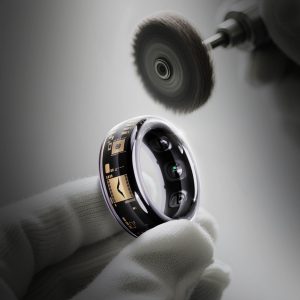Ever wondered why your favorite playlist sounds rich and immersive, but a phone call on the same device can sound flat and compressed? It's a common experience, and the reasons are rooted in the different technologies and priorities for music and voice communication.
This comprehensive guide breaks down everything you need to know about your phone's audio quality in 2025. We'll explore the core differences, the tech inside your phone, and practical tips to get the best possible sound for both music streaming and phone calls.
The Core Difference: High-Fidelity Music vs. Real-Time Calls
The primary reason for the quality gap is purpose. Music streaming is designed for a high-quality, immersive listening experience. It prioritizes rich, detailed audio. In contrast, phone calls are built for clear, real-time voice transmission. The main goal is minimal delay (latency) to ensure a smooth, natural conversation, which often means sacrificing some audio fidelity. Cellular networks prioritize this low-latency transmission for calls, while music apps can use more bandwidth to deliver better sound.
What is Audio Compression and Why Does It Matter?
To be sent over a network, audio is compressed. Phone calls heavily rely on ‘lossy' compression codecs like AMR or EVS (Enhanced Voice Services). This process shrinks the audio data by removing sounds considered ‘inaudible' to the human ear, making it faster to send over limited network bandwidth. While efficient, this can noticeably reduce the overall audio quality.
Music streaming apps like Spotify and Apple Music use less aggressive lossy codecs like AAC or MP3, which preserve more detail. For audiophiles, they even offer ‘lossless' formats like FLAC, which deliver the highest possible audio quality with maximum depth and clarity.
The Hardware Inside: DACs, Amps, and Microphones
Your phone's internal components play a huge role in sound. A Digital-to-Analog Converter (DAC) and amplifier are crucial for how your music sounds through headphones. The DAC converts the digital audio file into an analog signal your headphones can play. High-end phones often feature superior DAC and amp components, resulting in a cleaner, more powerful audio experience. For calls, the quality of your phone's built-in microphone is what determines how clear your voice sounds to the person on the other end. Top-tier phones often include advanced noise cancellation technology to isolate your voice from background sounds.
How Call Clarity Is Improving: VoLTE, VoNR, and Wi-Fi Calling
Call quality has significantly improved thanks to modern network technologies.
-
VoLTE (Voice over LTE) is now the standard for calls on 4G and 5G networks. It treats voice calls like data, enabling “HD Voice” which has a much wider frequency range than old circuit-switched calls.
-
VoNR (Voice over New Radio) is the next evolution for 5G networks, promising even richer and more reliable call audio quality.
-
Wi-Fi Calling is a fantastic feature for clear conversations, especially when cellular signal is weak. It can bypass network congestion and often uses advanced codecs like the Opus Audio Codec to deliver superior call quality. Similarly, professional conferencing apps like Zoom and Microsoft Teams often use Opus to provide excellent VoIP audio over a stable internet connection.
How to Get the Best Music and Podcast Experience
Unlike calls, you have direct control over your music's sound quality.
-
Adjust Streaming Settings: In your music app, change the audio quality setting to ‘High' or ‘Very High'. This increases the bitrate (the amount of data transmitted per second), resulting in much richer and more detailed audio.
-
Use High-Quality Bluetooth Codecs: For wireless listening, the Bluetooth codec is critical. For calls, your headset uses a basic profile. But for music, advanced codecs like aptX or LDAC transmit far more data, preserving the quality of your music. Check that both your phone and headphones support the same advanced codec.
-
Invest in External Gear: A good pair of wired headphones or a high-quality external microphone can dramatically improve both your listening experience and how you sound on calls, often outperforming your phone's built-in hardware.
Practical Tips for the Best Phone Audio in 2025
Follow these simple steps to optimize your phone's sound:
-
For Better Call Quality: Check your signal strength. If it's weak, enable Wi-Fi Calling. Turning Bluetooth off can sometimes help if you suspect interference. Always keep your phone's software updated.
-
Minimize Background Noise: When on a call, find a quiet spot. Many modern phones and headphones have excellent active noise cancellation features that filter out ambient sounds for clearer communication.
-
For Optimal Music Streaming: Set your streaming app's quality to its highest setting (if your data plan allows). Use high-quality headphones—either wired or wireless with a codec like aptX or LDAC.
-
Future-Proof Your Purchase: If audio quality is a top priority, look for a new phone that supports the latest technologies like EVS for calls and has a powerful DAC for music.









